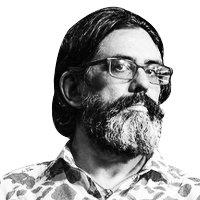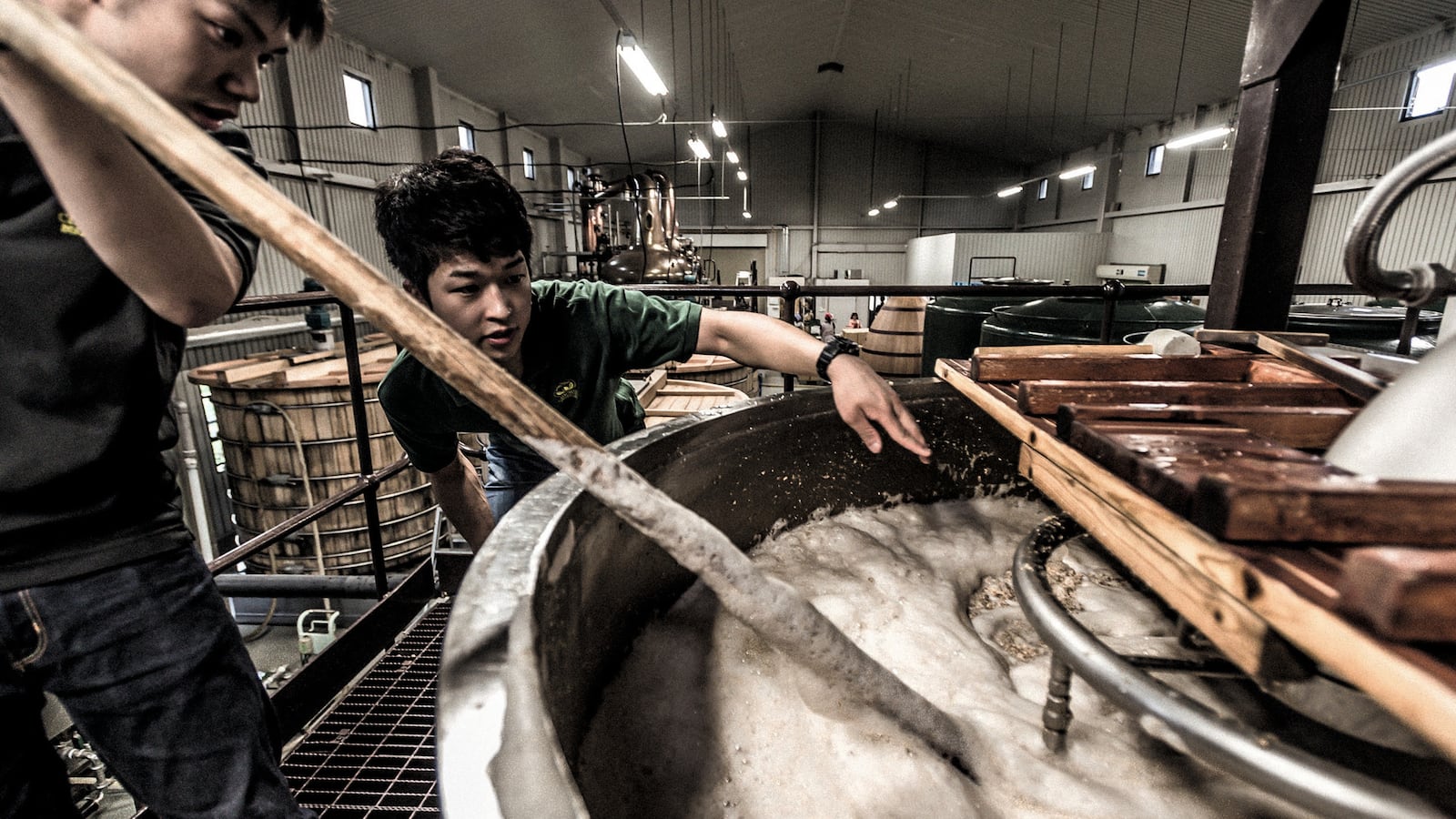This is how my first-ever day in Japan went. Arrive at Tokyo’s Narita airport, sushi for lunch in the city, bullet train (shinkansen) to Kyoto, train to Yamazaki. Before I quite knew what was happening, I was sitting alongside my old friend and mentor Michael Jackson while chief blender Seiichi Koshimizu was asking us to taste Suntory’s whisky. It was reddish in color and had an aroma unlike anything we had encountered before. We hazarded guesses. He smiled his shy smile. ‘It is mizunara. Japanese oak. We say it smells of temples.’
As I said, it was my first day in Japan. I hadn’t had a chance to smell a temple. Now I wanted to. It was a lesson in the cultural aspect of aromas. Smell is not fixed by language, but open to interpretation and that interpretation is partly determined by upbringing. I might say that the smell of a smoky whisky is like the Glasgow underground c.1967. A Japanese colleague might interpret it as a specific medicine. Past and place dictate the terms we use to describe the smells around us. Part of the fascination of travel is discovering new tastes and flavors, comparing home with this new place. Later that evening I was sitting next to a maiko (Kyoto dialect for geisha). ‘Do you eat many small potatoes in Scotland?’ was her opening line.
This mizunara was different, though. It was resinous, slightly like sandalwood, with a little bit of coconut; but none of these terms are quite accurate. I could have mentally labelled it ‘exotic’ and moved on, but it had me. I was being led by the nose deeper into Japan. ‘It smells of temples’ was now a suggestion that I should seek out these places and inhale them. In time, that led me to learn about incense, an aromatic thread which led from Japan, to Vietnam, to Arabia, high-end perfumers, and back to Japan again.

Mizunara, I realized, slowly, was a way of creating a marker for (some) Japanese whisky. Its use said: ‘This aroma is one way in which our whisky is special. We use it because of its aroma and that aroma means something special to us.’ It rooted the whisky in Japan, it helped to define it as different.
On that same day, Suntory’s Mas Minabi described Japanese whisky as being ‘transparent’. These whiskies had an aromatic intensity unlike Scotch; they were paradoxically managing to be vivid yet delicate, subtly powerful. The flavors were ordered, complex and seamless on the tongue; they had a clarity and precision. Some were familiar from Scotch, but the manner in which they presented themselves was different. Each glass was whisky, but it was not the whisky I had been brought up on. What makes Japanese whisky ‘Japanese’ has obsessed me ever since.
I was lucky enough to begin travelling to the country twice, sometime three times, a year. Every time I returned, another door seemed to open. I thought initially it was because I was beginning to be trusted, but that was just ego at work. I suspect that answers to the questions would have been given if I had known what questions to ask. I was being tutored, but was too stupid to realize it. Those apparently opaque, philosophical answers were in fact perfectly rational when my mind caught up. And so it continued, slowly moving forward, still asking that question: ‘But how is it Japanese?’
Part of the answer lay in the often subtle differences in production between Japanese and Scottish distillers. Some of it came from the climate and the way it influenced maturation. There was mizunara, of course, but not every whisky contained it. The rest of the conundrum, I began to believe, was rooted in place. Whisky does not sit apart from the culture that produces it. So much impacts on its making: ingredients, climate, landscape, cuisine, palate, manner of consumption. The cultural terroir in Japan will be different to that in Scotland—or in any other whisky-making nation.



What if, I began to wonder, there was some unseen link between Japan’s whisky-makers and the country’s other traditional craftsmen? The more I visited and talked to whisky-makers the more I saw that they were shokunin, master artisans dedicated to their craft. The way they approached whisky was imbued with the concept of kaizen—continuous incremental improvement. There seemed to be an aesthetic behind it that linked whisky to a web of other crafts: cooking, ceramics, metalwork, woodwork, and also design and architecture; even the way bartenders went about their craft. The more I looked, or obsessed about it, the more I saw the same impulse. That clarity was in the food, in the lack of ornamentation; it was there in haiku. Equally, maybe I was making connections where there were none. Maybe they just made whisky. Perhaps I was just mad. I had to find out one way or other.
So back I went, to visit all the distilleries and see other craftspeople. Ask them what motivated them, what lay behind their work. See if those connections were in fact there. A road test in both senses. A book at the end of it no matter what, but not one just of tasting notes, scores, sections on history and how whisky is made, and in-depth facts and figures. All of that is useful, and other writers will give you that.
I wanted to try and find out why whisky matters, what drives these people on, how it links to that wider culture, where tradition comes in. How strong was their craft, or how precarious?
The great 21st-century paradox is how greater connectivity has allowed us to separate ourselves from those things we are told we don’t like. We no longer browse. Algorithms tell us what, even who, we like. Something like whisky is reduced to little more than tasting notes and statistics about process. The richness and messiness of this complex, interdependent world are being steadily eroded, the connections are being lost and with their passing whisky floats free of place, history, weather, water and rock, and the people who make it. Separating whisky from all these things diminishes it and diminishes the people who make it. It can’t be allowed to happen.
The route is by now familiar. Flight to Tokyo Haneda, monorail to Hamamatsucho, taxi to the hotel, through the back streets, under the tracks, past tiny restaurants and apartment blocks, half-hidden shrines next to car parks, glimpses of walled-in river. People everywhere. Tokyo is in a constant sense of seethe. My head is still blurry from 12 hours on the plane.
My destination is Shiodome, a sleek, anonymous district of razor-edged multistory office blocks. The only nod to frivolity is the enormous clock, designed by Hayao Miyazaki, which seems to have been beamed in from his film Howl’s Moving Castle and yet—and this is very Tokyo—you are only a ten-minute walk from Ginza, 20 minutes from the sushi bars around Tsukiji fish market, while the wonderful chaos of Shimbashi is a five-minute stroll.
Tokyo is a series of islands, and to stretch the metaphor to breaking point, my desert island is the Park Hotel, which after many years is now more a home than a hotel. It has amazing bar staff, contemporary art exhibitions (each floor has been decorated by a different artist), while from one side there is a view over Tokyo Tower to Mount Fuji. Not today, though. It’s rainy season.
Check in, then back down to reception for my first meeting with Kohei Take. We needed a unified look for this mad book project and that meant only using one photographer. Question was, who? I knew no Japanese snappers. Thankfully my friend Alice knew Alicia Kirby, who used to work for Monocle magazine in Japan and was, according to Alice, ‘the best-connected person I know’. One email later Alicia had given me three names. Take’s images were the best, so he was hired.

He comes in, shaved head, scarf, denim jacket, a ball of energy and good humor. I like him immediately. I try to articulate what the idea is—people, craftsmanship, artisans, tradition, landscape—and whisky. Not cliché picture-postcard Japan but real Japan, images that link the whisky to the land, the people, and perhaps establish that net of connection between them all. ‘I get you,’ he says. ‘Eyes, hands, work, water. This will be fun. Now, get some rest. I’ll meet you at 7:30 and we can go and get the bus to Gotemba.’ Ah, the romance of the whisky-writer’s life. I avoid the bar and head up to the room. I know I’ll wake at 3 AM. It’s a weird fact about jet lag. No matter what time zone you’ve come to that internal alarm clock is triggered at 3 AM. Weird, huh?
Dave Broom’s The Way of Whisky: A Journey Around Japanese Whisky is now available.






